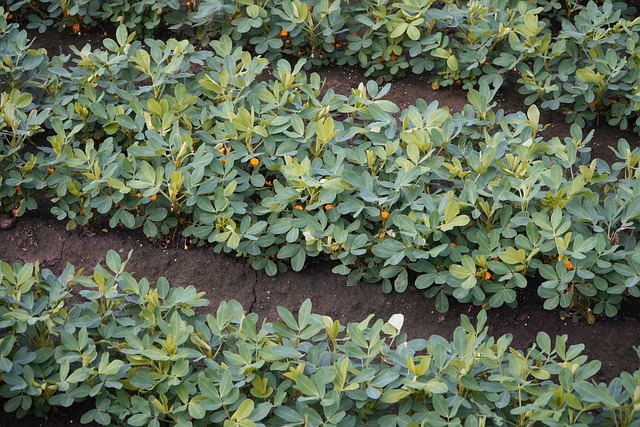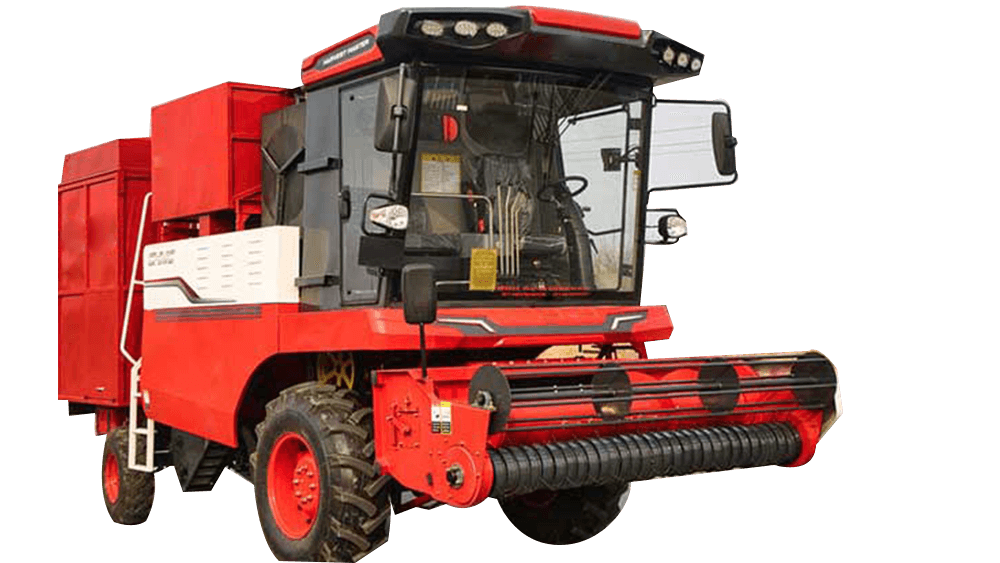In the push for efficiency in modern agriculture, peanut picking machines have become essential for many farmers. As planting scales expand, the ability of a high-performance picking machine to harvest quickly and effectively impacts not only the quality and timing of the season’s yield but also the overall operational profitability. Choosing the right peanut picking machine has thus become a priority for farmers.
With various types of peanut picking machines on the market—from self-propelled models to tractor-mounted and multi-functional types—each option differs in function, suitability, and cost. Farmers need to consider factors like harvesting efficiency, terrain compatibility, ease of operation, and maintenance costs when choosing equipment. Finding a machine that combines efficiency, cost-effectiveness, and durability is crucial, and the choices made here have a direct impact on both operational costs and revenue, often posing a tough decision for farmers.
In this article, we will closely examine the working principles of peanut picking machines, the application scenarios of different models, and the key technical parameters to consider during selection. We aim to provide practical advice to help you make an informed choice, ensuring that you find the best peanut picking machine to achieve a high-quality, efficient harvest season.
Contents
Peanut Picking Machine: How It Works

The peanut picking machine completes its process through several key steps:
- Digging and Separating: The front digging unit lifts the peanut plants from the soil, shakes off loose dirt, and ensures the roots and pods stay intact.
- Picking: The plants then move through a conveyor system into the picking unit, where rotating drums or chains separate the peanuts from the stems.
- Cleaning and Collecting: The separated peanuts pass through an air-sorting or screening system to remove impurities, after which they enter the collection box, ensuring clean, quality peanuts for harvest.
Main Types of Peanut Picking Machines
Peanut picking machines can be categorized based on their usage and operation needs as follows:
- Self-Propelled Peanut Picker: This type is ideal for large-scale farmland operations, offering high mobility and greater efficiency, making it suitable for long, continuous work sessions.
- Tractor-Mounted Peanut Picker: Designed to work in combination with a tractor, this machine provides excellent cost-effectiveness and is well-suited for small to medium-sized farms.
- Stationary Peanut Picker: This smaller, stationary model is suitable for farmers with limited acreage. After harvesting, the peanut plants are brought to the machine for picking. It’s typically compact and ideal for fields with lower production volumes.
Types and Features of Peanut Picking Machines
What is the Difference Between Self-Propelled and Tractor-Mounted Models?
Peanut picking machines are typically divided into two types based on their power source and operational mode: self-propelled and tractor-mounted.
- Self-Propelled Peanut Picker: This model comes with an independent power system, which allows it to move and operate on its own. It is ideal for medium to large-scale farms, offering a full range of integrated features such as automatic movement, picking, cleaning, and collection. This machine is easy to operate and very flexible, making it suitable for long working hours and large peanut harvesting areas.
- Tractor-Mounted Peanut Picker: This type requires a tractor for power and is best suited for small to medium farms. The tractor-mounted model is generally more cost-effective, but its functions and efficiency are slightly lower than those of the self-propelled version. While it may lack the picking efficiency, maneuverability, and continuous operating ability of a self-propelled machine, its simpler structure results in lower repair and maintenance costs.
Farmers can choose a model based on their farm size, workload frequency, and budget. Self-propelled machines are ideal for those seeking efficiency and time-saving operations, while tractor-mounted pickers are suitable for smaller farms, especially where the machine may need to handle other farm tasks as well.
Does the Peanut Picker Support Harvesting of Other Crops?
Some peanut pickers are designed for versatility and can harvest similar crops as well. For instance, certain models can be adjusted to harvest sweet potatoes, soybeans, or other root and legume crops. When selecting this type of multifunctional machine, it’s essential to confirm that it has replaceable picking or separating components, which ensures stable and efficient operation across different crops.
Which Farmers Benefit Most from a Multifunctional Peanut Picker? Are There High-Efficiency Models?
A multifunctional peanut picker is especially useful for farmers growing multiple crops, as it can meet seasonal demands for various harvests. This increases the usage rate of the equipment and saves on additional equipment costs, making it suitable for medium to large farms that grow peanuts, legumes, and similar crops.
For those prioritizing high output and efficiency, the market offers high-efficiency peanut pickers equipped with upgraded picking and cleaning mechanisms that can handle a high volume of crop processing in a short time. Many high-efficiency models also feature smart control technology, which optimizes the picking process and reduces damage to the harvested crop, ensuring quality yields. These models are ideal for farmers with tight timelines or large operational areas, as they significantly boost productivity.
Basic Functions
What Types of Terrain or Soil Conditions Suit a Peanut Picker?
Most peanut pickers work best on flat, dry soil, as these conditions improve picking efficiency and help prevent clogging. However, many modern models now offer greater adaptability, allowing them to operate effectively on slight slopes, in clay-like soils, or even in moist conditions. Machines equipped with anti-slip designs and anti-clogging systems perform better across varied terrains and soil moisture levels, which is essential for diverse farming needs.
Does the Machine Cause Damage to Peanuts? Is the Breakage Rate High?
High-quality peanut pickers feature carefully engineered designs that manage the impact and friction on peanuts during picking and separation, which helps keep the breakage rate low. Many brands incorporate flexible conveying and separation systems, minimizing shock to the peanut kernels. Typically, these machines keep breakage rates below 1%. For farmers focused on achieving high yields with superior crop quality, selecting a model with a low damage rate helps ensure the harvested peanuts meet high standards.

Efficiency and Capacity
How Efficient is a Peanut Picker? How Many Acres Can it Process Per Hour?
The efficiency of a peanut picker depends on its model, power, and working conditions. Generally, a self-propelled peanut picker can process 3-5 acres per hour, with high-performance models capable of handling over 6 acres per hour. Tractor-mounted models usually cover 2-3 acres per hour, making them ideal for small to medium-scale operations. Working conditions also affect efficiency significantly; flat, dry terrain helps maximize picking speed, while slippery or heavy, clay-like soil can slow down operations. Therefore, users should choose the right model based on their field conditions and the scale of their work to ensure high productivity.
How Much Weight Can a Peanut Picker Process in One Session?
Different peanut picker models handle varying amounts of peanuts in one session. Most standard peanut pickers can process 300-500 kg per hour, while high-efficiency or large-scale machines can handle 500-800 kg per hour, making them suitable for large operations. The weight a picker can manage per session also depends on its storage bin capacity. For users with high harvesting needs, picking a model with a larger storage bin reduces the need for frequent unloading, which further boosts efficiency. If the bin is smaller, regular unloading helps maintain continuous operation.
How Effective is the Cleaning Process of a Peanut Picker? Will it Leave Many Impurities?
Modern peanut pickers generally include cleaning systems that effectively separate out impurities, ensuring a high level of cleanliness in the harvested peanuts. High-end models often feature multi-stage cleaning systems that use airflow, screens, or vibration to remove soil, weeds, and other impurities. The quality of cleaning depends mainly on the design of the cleaning system and the adjustment options for cleaning intensity. Models with high cleaning precision leave very few impurities, making them ideal for users who have high quality standards for their peanut harvest.
Troubleshooting and After-Sales Service
What Are Common Issues with Peanut Pickers? How Can They Be Addressed?
Operating in high-intensity environments, peanut pickers can sometimes experience common issues such as picker blockages, cleaning system failures, or wear on transmission parts. Picker blockages often occur when handling wet or debris-heavy fields, which can hinder feeding. In such cases, stopping the machine and clearing out debris from the intake can help. Clogged screens or insufficient airflow often cause cleaning system failures, but users can resolve these issues by cleaning the screens and adjusting airflow settings.. For wear on transmission parts or loose chains, routine maintenance—such as regularly checking the transmission system and applying lubricant—can help. Replacing worn parts when necessary also extends the machine’s life.
Is There an After-Sales Service Package Available? Are Spare Parts Easily Accessible?
Minnuo Group offers comprehensive after-sales service, including technical support, routine maintenance, and regular upkeep suggestions to help users maximize the machine’s lifespan and performance. A key part of after-sales service includes the supply of easily accessible spare parts. Minnuo provides ample stock of frequently used parts, like picker gears, belts, chains, and screens, so users can quickly obtain replacements locally or online. Additionally, Minnuo offers maintenance agreements that include regular inspections based on user needs, ensuring machines remain in optimal condition throughout the season.
Are Standard Replacement Parts Available for Quick Repairs?
Minnuo peanut pickers are designed with maintenance convenience in mind. Most parts meet industry or proprietary standards, making it easy for users to find compatible replacements. Standardized parts ensure that users can quickly make repairs without concerns about incompatible models causing maintenance delays.Standard parts are widely available, and users can choose to purchase them from local dealers or directly from the manufacturer, reducing the time and effort required to source parts.
Does Minuo Offer On-Site Repair Services?
To ensure minimal downtime during the peak harvest season, Minnuo provides on-site repair services, especially for larger equipment or farms in remote areas. Users can contact Minnuo’s support team via the service hotline, describing the issue and their location. A qualified technician will bring the necessary tools and common replacement parts to the site to carry out the repair. On-site repair services are particularly valuable during the busy harvest season, helping users resolve issues quickly, minimize downtime, and keep their harvest on schedule.

Conclusion
The introduction of peanut picking machine has provided the peanut industry with a more efficient, labor-saving solution. Choosing the right peanut picker can reduce labor intensity, increase harvest efficiency, and ensure the quality of the crop. Among the various options, Minnuo’s peanut pickers stand out with their high performance, durability, and excellent after-sales service, helping farmers achieve efficient harvesting. If you have additional needs or questions about peanut pickers, we invite you to consult with Minnuo. We are committed to providing you with professional solutions to support your harvest success.

